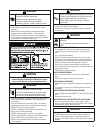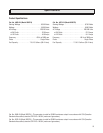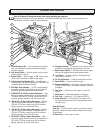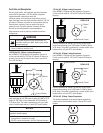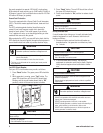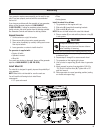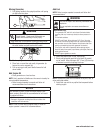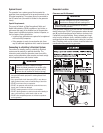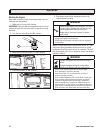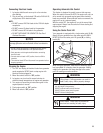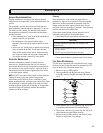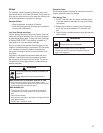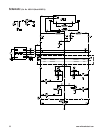
11
System Ground
The generator has a system ground that connects the
generator frame components to the ground terminals on the
AC output receptacles. The system ground is connected to
the AC neutral wire (the neutral is bonded to the generator
frame).
Special Requirements
There may be Federal or State Occupational Safety and
Health Administration (OSHA) regulations, local codes, or
ordinances that apply to the intended use of the generator.
Please consult a qualified electrician, electrical inspector, or
the local agency having jurisdiction:
• In some areas, generators are required to be registered
with local utility companies.
• If the generator is used at a construction site, there
may be additional regulations which must be observed.
Connecting to a Building’s Electrical System
Connections for standby power to a building’s electrical
system must be made by a qualified electrician. The
connection must isolate the generator power from utility
power or other alternative power sources and must comply
with all applicable laws and electrical codes.
WARNING
Generator produces hazardous voltage.
Failure to isolate generator from power utility
can result in death or injury to electric utility
workers due to backfeed of electrical energy.
• When using generator for backup power, notify utility company.
Use approved transfer equipment to isolate generator from
electric utility.
• Use a ground fault circuit interrupter (GFCI) in any damp or
highly conductive area, such as metal decking or steel work.
• DO NOT touch bare wires or receptacles.
• DO NOT use generator with electrical cords which are worn,
frayed, bare or otherwise damaged.
• DO NOT operate generator in the rain or wet weather.
• DO NOT handle generator or electrical cords while standing in
water, while barefoot, or while hands or feet are wet.
• DO NOT allow unqualified persons or children to operate or
service generator.
Generator Location
Clearances and Air Movement
WARNING
Exhaust heat/gases can ignite combustibles,
structures or damage fuel tank causing a fire.
• Keep at least 5 feet (1.5 m) of clearance on all sides of
generator including overhead.
Place generator outdoors in an area that will not accumulate
deadly exhaust gas. DO NOT place generator where exhaust
gas (A) could accumulate and enter inside or be drawn into
a potentially occupied building. Ensure exhaust gas is kept
away from any windows, doors, ventilation intakes, or other
openings that can allow exhaust gas to collect in a confined
area. Prevailing winds and air currents should be taken into
consideration when positioning generator.
A



